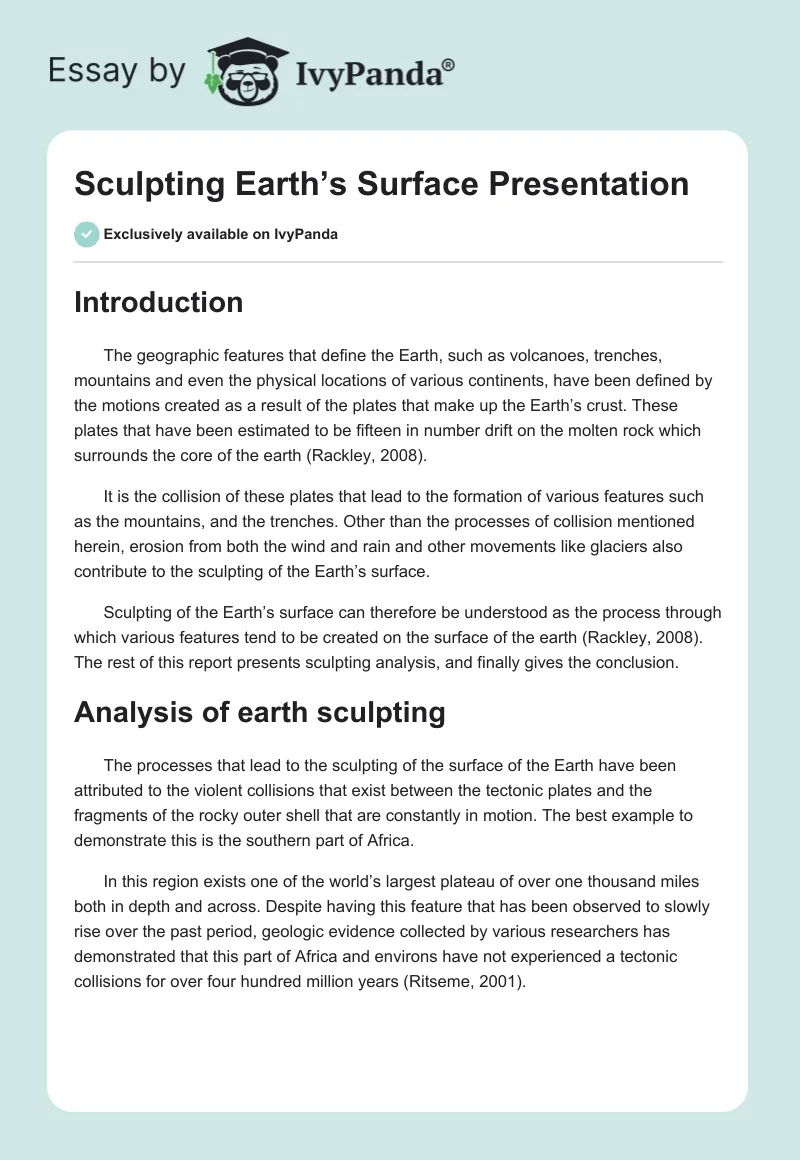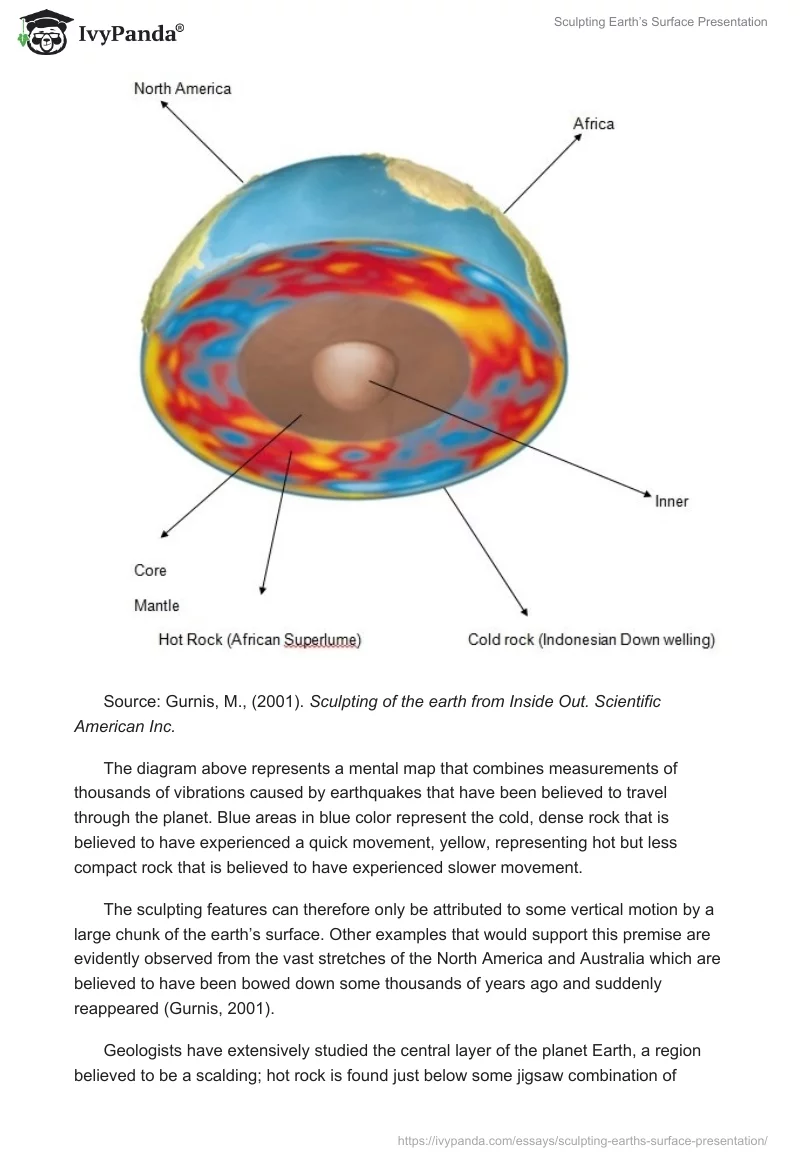Introduction
The geographic features that define the Earth, such as volcanoes, trenches, mountains and even the physical locations of various continents, have been defined by the motions created as a result of the plates that make up the Earth’s crust. These plates that have been estimated to be fifteen in number drift on the molten rock which surrounds the core of the earth (Rackley, 2008).
It is the collision of these plates that lead to the formation of various features such as the mountains, and the trenches. Other than the processes of collision mentioned herein, erosion from both the wind and rain and other movements like glaciers also contribute to the sculpting of the Earth’s surface.
Sculpting of the Earth’s surface can therefore be understood as the process through which various features tend to be created on the surface of the earth (Rackley, 2008). The rest of this report presents sculpting analysis, and finally gives the conclusion.
Analysis of earth sculpting
The processes that lead to the sculpting of the surface of the Earth have been attributed to the violent collisions that exist between the tectonic plates and the fragments of the rocky outer shell that are constantly in motion. The best example to demonstrate this is the southern part of Africa.
In this region exists one of the world’s largest plateau of over one thousand miles both in depth and across. Despite having this feature that has been observed to slowly rise over the past period, geologic evidence collected by various researchers has demonstrated that this part of Africa and environs have not experienced a tectonic collisions for over four hundred million years (Ritseme, 2001).

Source: Gurnis, M., (2001). Sculpting of the earth from Inside Out. Scientific American Inc.
The diagram above represents a mental map that combines measurements of thousands of vibrations caused by earthquakes that have been believed to travel through the planet. Blue areas in blue color represent the cold, dense rock that is believed to have experienced a quick movement, yellow, representing hot but less compact rock that is believed to have experienced slower movement.
The sculpting features can therefore only be attributed to some vertical motion by a large chunk of the earth’s surface. Other examples that would support this premise are evidently observed from the vast stretches of the North America and Australia which are believed to have been bowed down some thousands of years ago and suddenly reappeared (Gurnis, 2001).
Geologists have extensively studied the central layer of the planet Earth, a region believed to be a scalding; hot rock is found just below some jigsaw combination of tectonic plates and stretches much deeper to about 1800 miles away from the outer edge of the earth’s iron core (Gurnis, 2001). Earlier studies indicated that the differences in the mantle temperature result in the solid rocks creeping features.
However, the scientific relationship that exists between the molasses like structures (that results in creeping features) and the rise to the vertical motions could not be substantiated (Ritseme, 2001). Moreover, progress in understanding of the same has been enabled due to the inventions of powerful computer models that have the ability of combining snapshots of the mantle in the present day with various clues into how such processes could have occurred (Gurnis, 2001).
The African superswell mystery was among the easiest and first explainable structures with these computers. These Southern African features were attributed to the mantle, which having been creped could churn, and roil like hot soup pot, ready to boil.
The low density of the rock, which appeared to be very hot, made the resultant boiling material buoyant, thereby ascending slowly while the colder and denser rocks tend to sink until the heat that escapes the molten core warms the material enough to make it rise repeatedly. The motions that appear in a three dimension are called convectional and are believed to create a horizontal motion experienced by the tectonic plates (Ritseme, 2001).
Conclusion
The Earth’s interior constant motions in its mantle can therefore be attributed to the constant drifts, surface movements of the Earth’s surface and other physical features experienced. This points out to the fact that such processes happening in the interior part of the earth give the greatest danger to the life-possessing species on the Earth.
Reference List
Gurnis, M., (2001). Sculpting of the earth from Inside Out. Scientific American Inc. Web.
Rackley, S., (2008),. The earth’s surface’ weathering process. USA: Scientific American Inc.
Ritseme, J., (2001). Indonesian down welling. California institute of technology. USA: Scientific American Inc.


